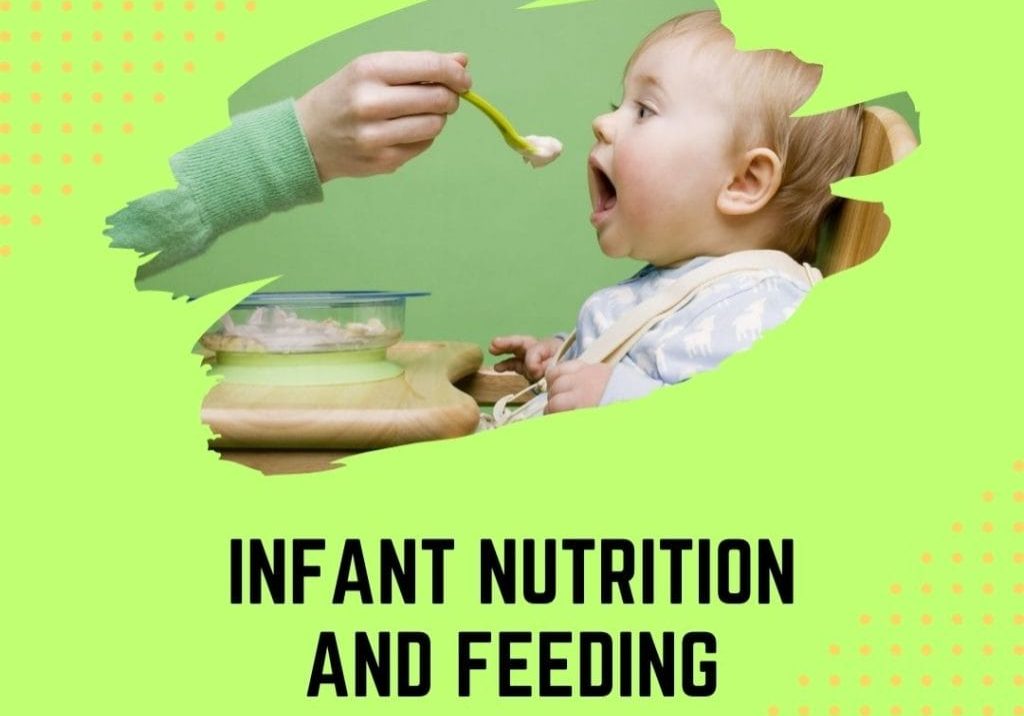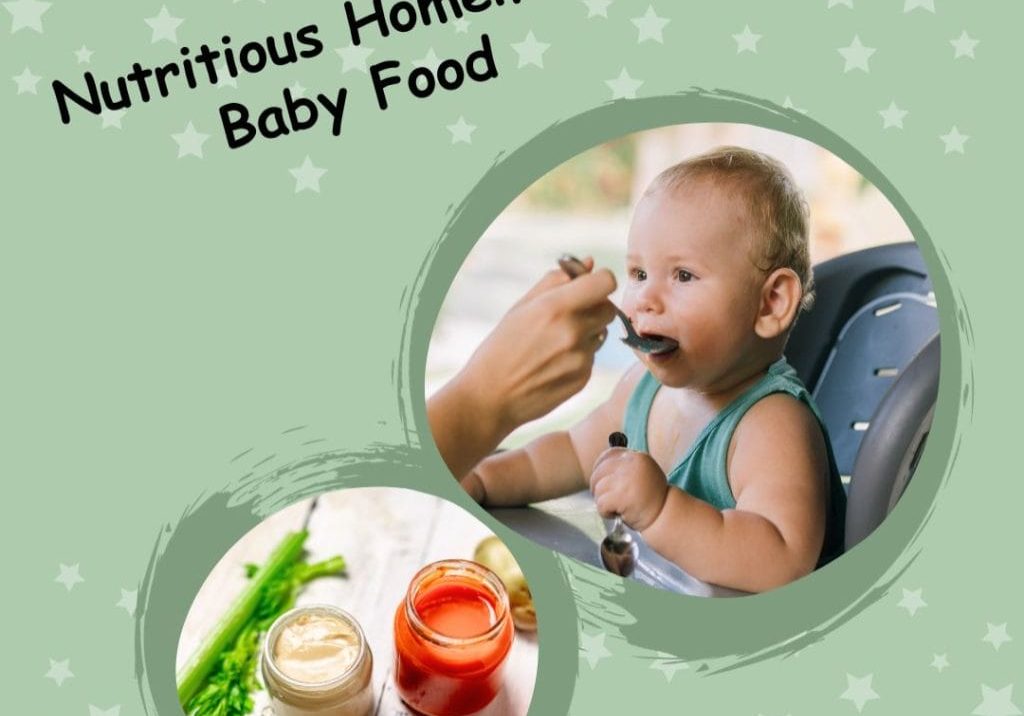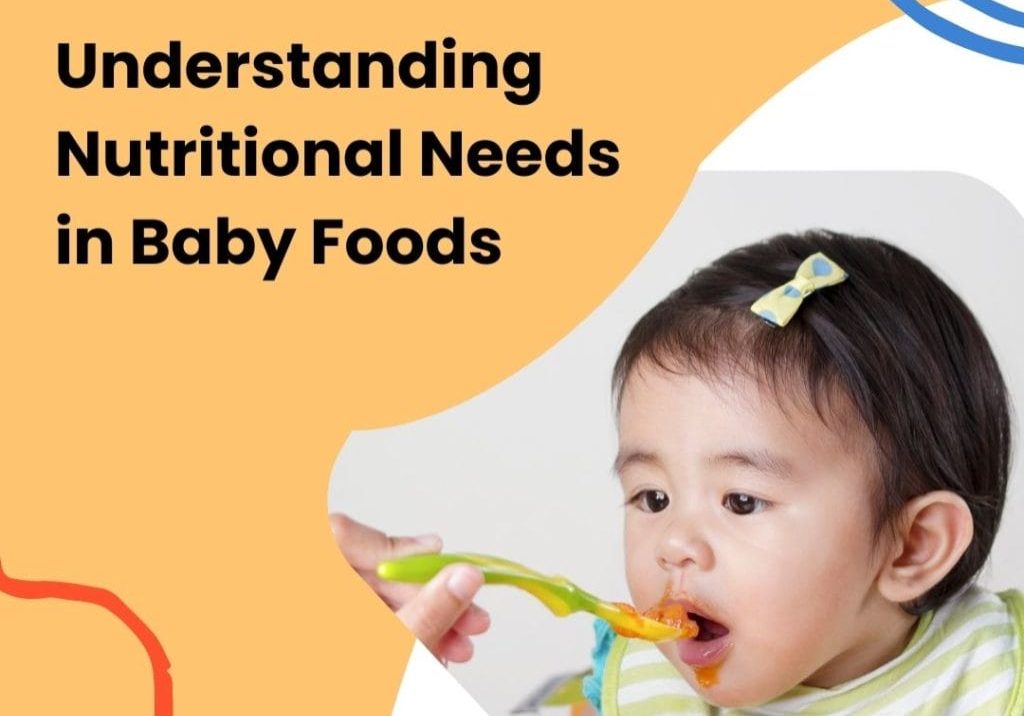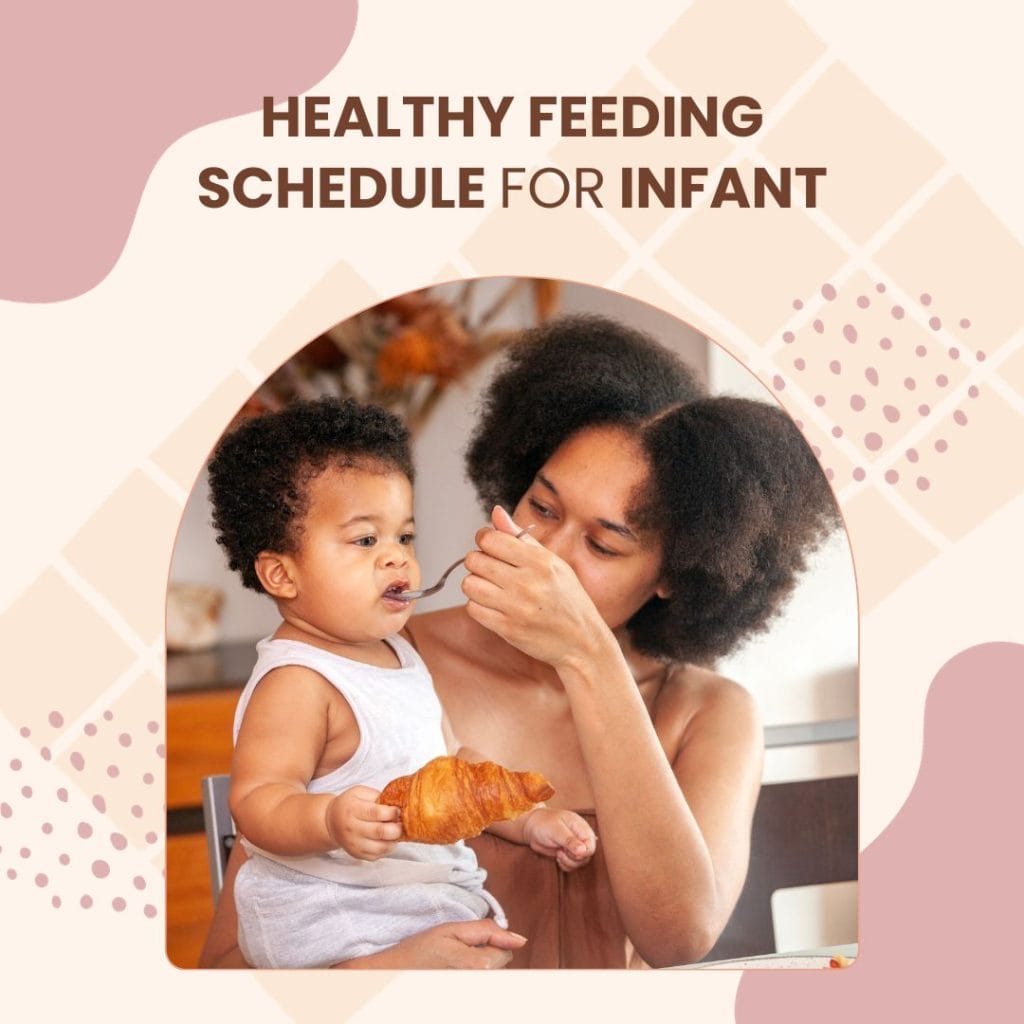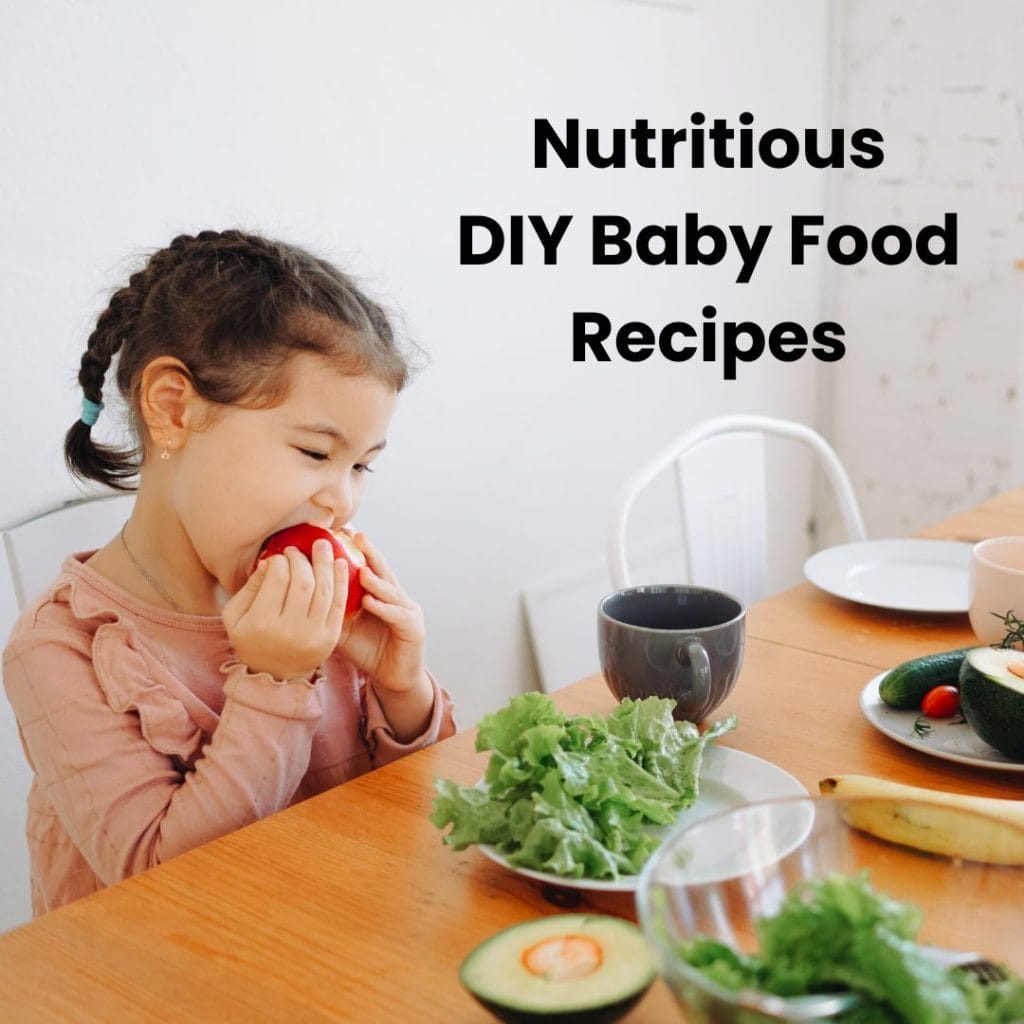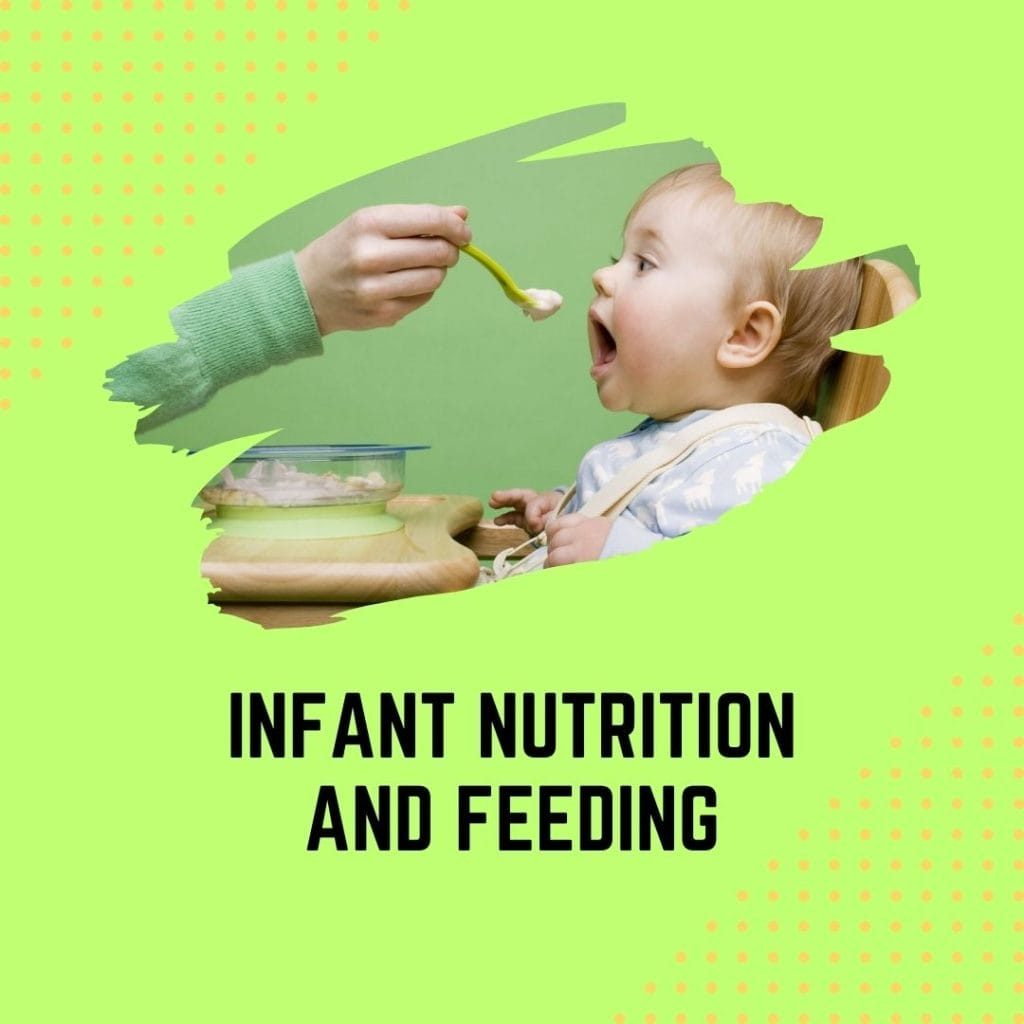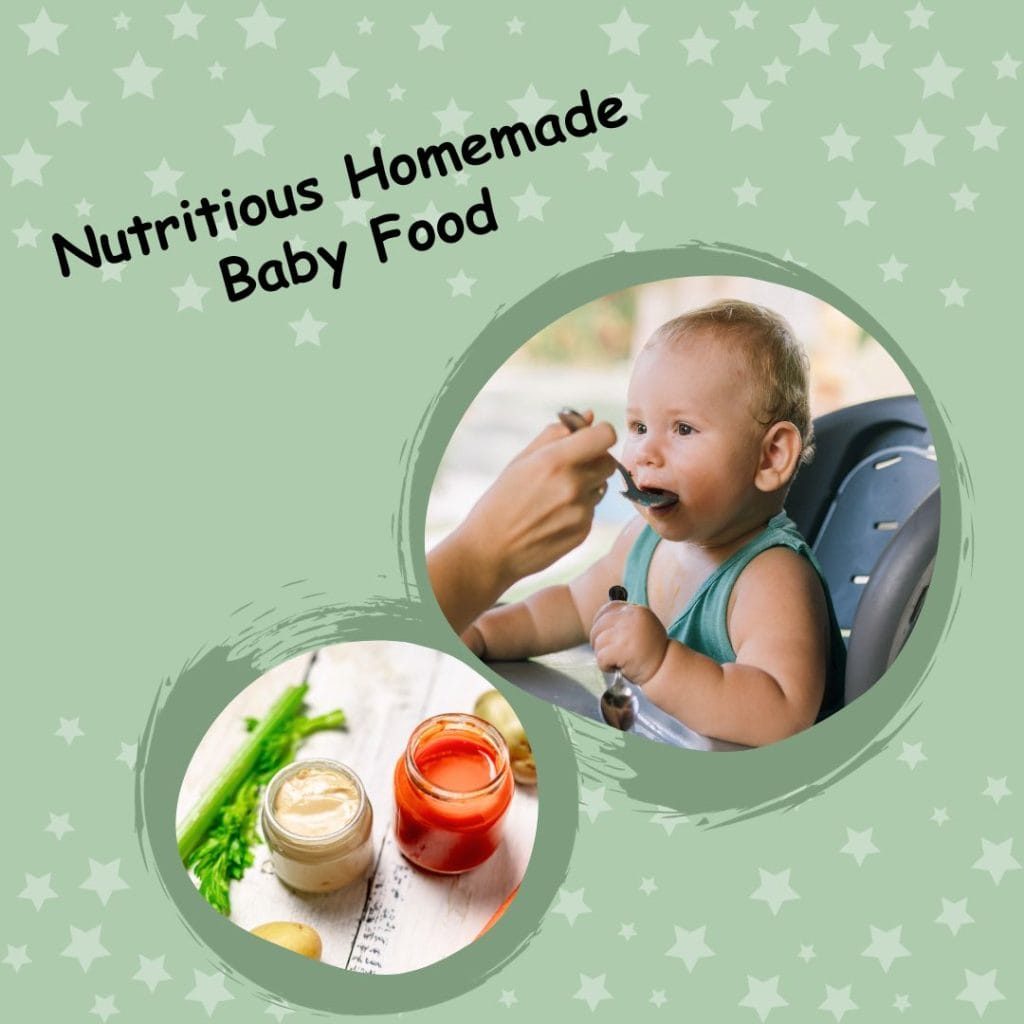Feeding your infant is one of the first and most fundamental tasks you will undertake as a parent. It’s a journey that starts with selecting the right bottle and progresses to introducing your little one to a world of flavors through baby food. This guide aims to navigate the transition from liquid to solid nourishment, ensuring your baby gets the best start in life.
As your baby grows, their nutritional needs evolve, marking the transition from exclusive milk feeding to the gradual introduction of solid foods. Each stage of this journey comes with its own set of questions and concerns. What kind of bottle should you use? When is the right time to introduce solid food? How can you ensure that your baby is getting all the necessary nutrients? These are just some of the topics we will explore.
Let’s embark on this journey together, equipped with the right knowledge to ensure your little one thrives from their very first bottle to their first birthday and beyond.
Understanding Infant Feeding: Navigating the Early Stages of Nutrition
Embarking on the journey of feeding your infant is one of the most important aspects of early parenthood. It sets the foundation for a child’s growth, health, and well-being. This article explores the developmental stages of infant feeding, emphasizes the importance of nutrition in the early years, and provides an overview of feeding options including breast milk, formula, and baby food.
Developmental Stages of Infant Feeding
Birth to 4 Months: Exclusive Milk Feeding
- Newborns’ Nutrition: Initially, infants thrive exclusively on milk—breast milk being the gold standard, providing optimal nutrition and antibodies. For various reasons, some may opt for infant formula, which is designed to closely mimic breast milk.
- Feeding Cues and Patterns: Understand hunger cues like sucking motions, rooting, and fussiness, and recognize that early feeding is on-demand, typically every 2-3 hours.
4 to 6 Months: Introduction to Solids
- Readiness for Solids: Around this age, babies show signs of being ready for solid foods. These signs include good neck control, sitting with support, and showing interest in foods you’re eating.
- First Foods: Initial foods are usually single-grain cereals or pureed fruits and vegetables. It’s a time for exploration, with a continued reliance on milk for nutrition.
6 to 12 Months: Expanding the Palette
- Increasing Variety: As babies grow, they can handle more textures and types of food. Offer a variety of foods to expose them to different tastes and nutrients.
- Self-Feeding: Encourage self-feeding with finger foods to develop motor skills. Continue to offer breast milk or formula as a main source of nutrition, with gradually increasing amounts of solid foods.
12 Months and Beyond: Transitioning to Family Foods
- Full-Fledged Eaters: By the end of the first year, many infants are ready to enjoy chopped, ground, or mashed versions of whatever the rest of the family is eating.
- Milk Transitions: Transition from breast milk or formula to whole milk and ensure a balanced diet that supports ongoing growth and development.
Importance of Nutrition in Early Years
- Critical Growth: The first 1,000 days of life are crucial for brain development, physical growth, and immune system establishment.
- Setting Up Dietary Patterns: Early feeding experiences can set the stage for a child’s future eating habits and preferences.
- Preventing Future Health Issues: Adequate nutrition reduces the risk of chronic diseases like obesity, diabetes, and heart disease later in life.
Overview of Feeding Options
Breast Milk
- Benefits: Provides a complete nutritional profile tailored to the infant’s needs, antibodies to fight viruses and bacteria, and a beneficial impact on long-term health.
- Considerations: While breastfeeding is recommended, it’s important to acknowledge and support mothers through challenges they may face.
Formula
- Formula as an Alternative: For those unable to breastfeed or choose not to, infant formula is a scientifically developed alternative providing balanced nutrition.
- Types of Formula: Discuss various types, including cow’s milk-based, soy-based, and specialized formulas for specific medical conditions.
Baby Food
- Starting Solids: When and how to introduce solid foods to complement milk feeding.
- Homemade vs. Store-Bought: Considerations for choosing between making baby food at home or purchasing ready-made options.
Choosing the Right Baby Bottles: A Guide for New Parents
Choosing the right baby bottle for your infant can feel like navigating a maze of options, each promising to be the best for your baby. Understanding the factors involved in selecting bottles, such as material, nipple type, and size, as well as the importance of BPA-free options, is crucial for the health and happiness of your baby. This guide aims to simplify the process, helping you make an informed decision.
Factors in Selecting Bottles
Material: Glass, Plastic, Stainless Steel, or Silicone
- Glass Bottles: Durable and long-lasting, they don’t absorb odors or flavors but are heavier and can break.
- Plastic Bottles: Lightweight and shatterproof, but ensure they are BPA-free to avoid harmful chemicals.
- Stainless Steel Bottles: Durable and insulate well but are more expensive and you can’t see how much your baby has drunk.
- Silicone Bottles: Soft and lightweight, resistant to breakage, but can be more expensive.
Nipple Type: Flow and Shape
- Flow Rate: Nipples come in various flow rates designed to be appropriate for different ages. Newborns typically start with a slow flow, progressing as they grow.
- Shape: Nipples can be orthodontic, wide-based, or bell-shaped, affecting how the baby latches. Consider trying a few styles to see what your baby prefers.
Size and Shape of the Bottle
- Capacity: Bottles range in size from 4 ounces to 12 ounces. Smaller bottles are better for newborns, while larger ones cater to older babies.
- Shape: Some bottles are angled or designed to reduce air swallowed during feeding, which can help with gas and colic.
The Importance of BPA-Free Options
Understanding BPA
- BPA (Bisphenol A) is a chemical historically used in producing plastics and resins. Research has linked BPA to adverse health effects, particularly in infants and young children.
- Health Concerns: Exposure to BPA is a concern due to its potential effects on the brain and behavior of babies and young children.
Choosing BPA-Free
- Regulations: Many countries now regulate the use of BPA in baby bottles and sippy cups. Ensure any plastic bottle you choose is labeled as BPA-free.
- Benefits: BPA-free bottles provide the same functionality without the health risks associated with BPA exposure.
Navigating the Market: Tips for Parents
- Start with a Few Types: Purchase a few different bottles and nipples to see what your baby prefers before buying in bulk.
- Consider Your Lifestyle: If you’re often on the go, a durable and easy-to-clean option might be best. If your baby is primarily breastfed, a bottle that mimics breastfeeding might be ideal.
- Read Reviews and Recommendations: Other parents’ experiences can be invaluable in making a choice.
- Consult Healthcare Professionals: Your pediatrician can offer guidance based on your baby’s specific needs.
The Transition to Baby Food: Navigating Your Baby’s Milestone
Transitioning your baby from milk to solid foods is a significant milestone in their development. It’s not just about introducing new tastes and textures; it’s about fostering a healthy relationship with food that will last a lifetime. Knowing when your baby is ready for solids, how to introduce these new foods, and the benefits of homemade baby food are all essential components of this exciting phase. This article will guide you through each step, ensuring a smooth and joyful transition for both you and your baby.
Signs Your Baby is Ready for Solid Foods
Before introducing solid foods, it’s crucial to recognize the signs indicating that your baby is developmentally ready, typically around 6 months of age. Look for:
- Increased Head Control: Ability to keep their head in a steady, upright position.
- Sitting Well when Supported: Even if they’re not quite ready to sit alone, being stable with support is key.
- Curiosity about Food: Showing interest in what you’re eating, reaching out to grab food items.
- Ability to Move Food to Throat: If they can move food to the back of their mouth and swallow it rather than pushing it out with their tongue, they might be ready.
- Hunger Cues: Demanding more frequent feedings might be a sign that milk alone is no longer enough.
Introduction Strategy for Solid Foods
Introducing solid foods should be a gradual, patient process, focusing on one food at a time. Here’s how to start:
- Choose the Right Time: Start when your baby is in a good mood and not too hungry or full. This helps associate eating with a positive experience.
- First Foods: Begin with single-grain cereals or pureed fruits and vegetables. These can be mixed with breast milk or formula to a suitable consistency.
- One at a Time: Introduce one new food every 3-5 days. This helps identify any allergies or intolerances.
- Encourage Self-Feeding: As they grow, encourage your baby to use their fingers to feed themselves, fostering independence and motor skills.
- Be Patient and Persistent: It may take several attempts for a baby to enjoy a new food. Keep trying and keep the atmosphere positive and stress-free.
Advantages of Homemade Baby Food
While store-bought baby food can be convenient, there are distinct benefits to making baby food at home:
- Nutritional Control: Know exactly what’s going into your baby’s food, ensuring it’s fresh and high-quality.
- Variety and Taste: Homemade food is generally more flavorful and can be customized to your baby’s preferences, encouraging a broader palate.
- Cost-Effective: Making your own baby food can be less expensive than buying pre-made options.
- Bonding: The act of preparing your baby’s food can create a more intimate feeding experience.
How to Prepare Homemade Baby Food
- Choose the Right Ingredients: Start with fresh or frozen fruits and vegetables. Organic is ideal to avoid pesticides, but ensure all produce is thoroughly washed.
- Cooking Method: Steam or microwave vegetables and fruits until they’re soft, preserving the maximum amount of nutrients.
- Pureeing: Use a blender or food processor to puree the food, adding water, breast milk, or formula to get the desired consistency.
- Storing: Freeze extra portions in ice cube trays or small containers for quick, easy meals.
- Safety: Ensure all utensils and containers are clean to prevent bacterial growth, and always check the temperature before feeding.
Preparing Baby Food at Home: A Complete Guide
Preparing baby food at home is a rewarding process that can contribute significantly to your baby’s health and well-being. With control over ingredients and texture, homemade baby food can be tailored to your baby’s preferences and nutritional needs. This guide will walk you through choosing the right equipment, selecting nutritious ingredients and recipes, and offering tips for storage and meal prep.
Choosing the Right Equipment
To make homemade baby food, you need a few key kitchen tools:
- Blender or Food Processor: A high-quality blender or food processor is essential for creating smooth purees, especially for early-stage eaters.
- Steamer: Steaming is a healthy way to cook vegetables and fruits while retaining most nutrients.
- Ice Cube Trays or Small Containers: Perfect for freezing individual portions of baby food.
- Fine Mesh Sieve or Strainer: Helps achieve a smooth texture by removing fibrous parts or seeds.
- Cutting Board & Sharp Knife: Basic essentials for prepping ingredients.
Investing in durable and easy-to-clean equipment can make the process more efficient and enjoyable.
Nutritious Ingredients and Recipes
Ingredients
- Fruits and Vegetables: Rich in vitamins, minerals, and fiber. Start with sweet potatoes, carrots, apples, and pears, known for their palatability and nutrient content.
- Proteins: As your baby grows, introduce pureed meats, lentils, or beans for iron and protein.
- Whole Grains: Oats, barley, and rice can be cooked and pureed or finely ground into cereals.
Recipes
- Simple Purees: Begin with single-ingredient purees. Cook the ingredient until soft, then blend until smooth, adding water, breast milk, or formula as needed.
- Combination Meals: As your baby’s taste develops, combine ingredients, like chicken with sweet potato or peas and carrots.
- Texture Variety: Gradually introduce more texture as your baby gets older, mashing instead of pureeing and adding small, soft pieces of food.
Tips for Storage and Meal Prep
Storage
- Freezing: Pour pureed food into ice cube trays or small containers and freeze. Once frozen, transfer cubes to a freezer bag labeled with the date and contents.
- Refrigeration: Store fresh puree in the refrigerator in airtight containers for up to 48 hours.
Meal Prep
- Batch Cooking: Prepare large quantities of purees and freeze in portions. This approach saves time and ensures a variety of foods at the ready.
- Rotating Menus: To ensure a balanced diet, rotate through different fruits, vegetables, and proteins each week.
- Labeling: Always label containers with the content and date prepared to keep track of freshness and variety.
Optimizing Baby Food Nutrition: A Comprehensive Guide
Optimizing nutrition in baby food is crucial for ensuring the healthy growth and development of your infant. The early months and years of your child’s life are foundational in setting the stage for lifelong health and wellness. This guide will focus on the essential nutrients required for infant growth, how to read and understand baby food labels, and will delve deep into the ingredients and nutritional guidelines that are vital for your baby’s diet.
Essential Nutrients for Infant Growth
A balanced diet for your baby includes a variety of nutrients:
- Proteins: Essential for growth and development. Found in breast milk, formula, and later in pureed meats and legumes.
- Fats: Crucial for brain development. Ensure your baby gets healthy fats from breast milk, formula, and sources like avocado.
- Carbohydrates: Provide energy for your growing baby. Available in fruits, vegetables, and cereals.
- Vitamins and Minerals: Important for various body functions. Vitamin D and calcium are critical for bone health, iron for blood, and zinc for the immune system.
- Fiber: Not typically a focus in early baby foods but important as they transition to more solid foods for digestive health.
Reading and Understanding Baby Food Labels
When purchasing store-bought baby food, it’s essential to understand what the labels mean:
- Ingredients List: The ingredients are listed in order of quantity. Look for whole foods and be wary of long lists of additives.
- Nutrient Information: Pay attention to the levels of essential nutrients like iron, calcium, and vitamins.
- “Best by” Dates: Ensure the food is within the freshness window for optimal nutrition.
- Special Labels: Look for labels like “Organic” or “Non-GMO” if these factors are important to your family’s dietary choices.
Deep Dive into Ingredients and Nutritional Guidelines
Selecting the Right Ingredients
- Whole Foods: Choose whole, fresh foods as the base of homemade baby food. Organic produce may reduce exposure to pesticides.
- Diversity: Include a variety of fruits, vegetables, grains, and protein sources to expose your baby to different nutrients.
- Avoid Additives: Minimize sugar, salt, and preservatives, especially in store-bought foods.
Nutritional Guidelines
- Stage Appropriate: Tailor nutrition to the developmental stage, starting with simpler foods and gradually increasing complexity and texture.
- Allergen Introduction: Follow current guidelines on introducing allergens, doing so in a controlled manner and one at a time.
- Hydration: Ensure adequate fluid intake, particularly when introducing more solid foods.
Establishing Healthy Eating Habits: Foundations for a Lifetime
Establishing healthy eating habits from a young age is crucial in setting the stage for lifelong nutrition and health. This guide will delve into creating a feeding schedule, understanding and implementing responsive feeding techniques, and encouraging a varied diet for your child. These elements are key to nurturing a positive relationship with food and ensuring nutritional well-being.
Creating a Feeding Schedule
A consistent feeding schedule helps regulate your baby’s hunger cues and ensures they receive the nutrition they need throughout the day.
- Consistency: Aim for regular meal and snack times to create a routine.
- Flexibility: While consistency is important, be flexible to your child’s hunger cues, especially in the early stages of feeding.
- Transitioning: As your child grows, gradually adjust the schedule to fit their changing needs and eating habits.
Responsive Feeding Techniques
Responsive feeding is about recognizing and responding to your baby’s hunger and fullness cues, promoting self-regulation and a positive eating experience.
- Hunger Cues: Look for signs that your baby is hungry, such as reaching for food or being more attentive. Start feeding before they become too fussy.
- Fullness Cues: Pay attention to when your child starts turning away from food or slows down eating, indicating they are full.
- Interaction: Engage with your child during meal times, making them relaxed and receptive to eating.
- Patience: Allow your child to eat at their own pace and encourage trying new foods, but don’t force it.
Encouraging a Varied Diet
Introducing a variety of foods early on can help develop a palate for different flavors and textures, promoting balanced nutrition.
- Wide Range of Foods: Include a variety of fruits, vegetables, grains, and proteins in your child’s diet.
- Introducing New Foods: It may take multiple exposures for a child to accept a new food. Be patient and keep reintroducing them without pressure.
- Modeling: Children learn by example. Eating a variety of healthy foods yourself can encourage them to do the same.
- Mixing Favorites with New Foods: Pair new or less preferred foods with those you know they like to make them more appealing.
Navigating Challenges and Concerns in Infant Feeding
Feeding your infant is often accompanied by various challenges and concerns. While it’s a rewarding experience, it’s not uncommon to encounter issues that can cause anxiety for new parents. This article aims to address common feeding problems and their solutions, how to deal with allergies and sensitivities, and guidance on when it’s appropriate to consult healthcare professionals.
Common Feeding Problems and Solutions
Refusal to Eat
- Solution: Ensure a calm, distraction-free environment. Offer food when your baby is not too tired or too hungry. If refusal persists, try different food textures or flavors.
Spit-Ups or Vomiting
- Solution: Feed smaller amounts more frequently, and burp your baby often during and after feeding. Keep the baby upright after eating. If the problem is severe or persistent, seek medical advice.
Gas or Colic
- Solution: Check if the baby is swallowing air while feeding, which can be due to incorrect bottle use or latch during breastfeeding. Use a slow-flow nipple for bottle feeding and consider trying formulas designed for sensitive stomachs.
Allergies and Sensitivities
Identifying and managing allergies and sensitivities early can prevent discomfort and serious reactions.
- Signs of Allergies: Look for hives, skin rashes, vomiting, diarrhea, or respiratory symptoms after eating certain foods.
- Introducing Allergens: Introduce common allergens one at a time in small amounts and monitor for any reactions.
- Sensitivities: Some babies might have intolerances to certain ingredients like lactose or soy, leading to digestive issues.
When to Consult Healthcare Professionals
Knowing when to seek help is vital in managing feeding challenges effectively.
- Persisting Problems: If issues like refusal to eat, vomiting, or diarrhea persist, it’s important to consult a professional.
- Growth Concerns: Regular check-ups are essential to ensure your baby is growing as expected. Consult a healthcare provider if you notice a sudden drop in weight gain or overall growth.
- Allergic Reactions: Any sign of an allergic reaction, especially if severe, warrants immediate medical attention.
- Feeding Technique Support: Lactation consultants can offer invaluable support for breastfeeding challenges, and pediatricians can provide guidance on formula feeding and introducing solids.
Advanced Insights in Infant Nutrition: Understanding the Future of Feeding
Infant nutrition is a critical aspect of early child development, with ongoing research constantly reshaping our understanding of what’s best for babies. This article explores the latest research and trends in infant feeding, as well as the potential future of infant nutrition and feeding technologies, providing a glimpse into how we might be nurturing the next generation.
The Latest Research and Trends in Infant Feeding
Personalized Nutrition
- Genetic and Microbiome Insights: Emerging research focuses on how a baby’s genetics and microbiome composition might influence their nutritional needs and how customizing diet can support optimal growth and development.
Breast Milk Science
- Components and Benefits: Ongoing studies continue to uncover the unique components of breast milk, including antibodies, prebiotics, and hormones, and how they contribute to infant health.
- Lactation Support: Innovations in lactation support, from supplements to improve milk production to advanced breast pumps, are making breastfeeding more accessible and manageable.
Formula Advancements
- Mimicking Breast Milk: As science uncovers more about the complexities of breast milk, formulas are becoming more sophisticated in mimicking its nutritional profile.
- Specialized Formulas: There’s a growing trend in formulas tailored for specific dietary needs, allergies, or health conditions.
Future of Infant Nutrition and Feeding Technologies
Smart Feeding Devices
- Intelligent Bottles: Future bottles may track how much and how fast a baby eats, providing data that can be used to adjust feeding practices.
- Temperature Regulation: Technological advancements are leading to bottles capable of maintaining optimal milk temperature throughout feeding.
Nutritional Genomics
- Customized Diets: Understanding a baby’s genetic makeup might one day allow for completely personalized nutrition plans that cater to their specific growth and health needs.
Sustainable Practices
- Eco-Friendly Packaging: As environmental awareness grows, so does the push for sustainable packaging and practices in baby food products.
- Plant-Based Options: The rise in plant-based diets is extending to infant nutrition, with research exploring the viability and benefits of plant-based formulas.
Global Nutrition Initiatives
- Addressing Malnutrition: Innovations in affordable, high-nutrient foods aim to combat infant malnutrition globally.
- Education and Accessibility: Efforts are increasing to provide better education around infant nutrition and make healthy feeding options more accessible worldwide.
Conclusion
Mastering the journey from bottles to baby food is a profound journey filled with growth, challenges, and milestones. As you’ve navigated through understanding infant feeding, selecting the right bottles, transitioning to solid foods, preparing homemade meals, optimizing nutrition, establishing healthy eating habits, addressing common concerns, and looking ahead to future trends, remember that each step is an opportunity to nourish and nurture your child’s development. This guide aims to equip you with the knowledge and confidence to make informed decisions about your infant’s dietary needs, ensuring a healthy start. As you continue on this path, embrace each moment, seek support when needed, and enjoy the journey of watching your little one grow and thrive.



